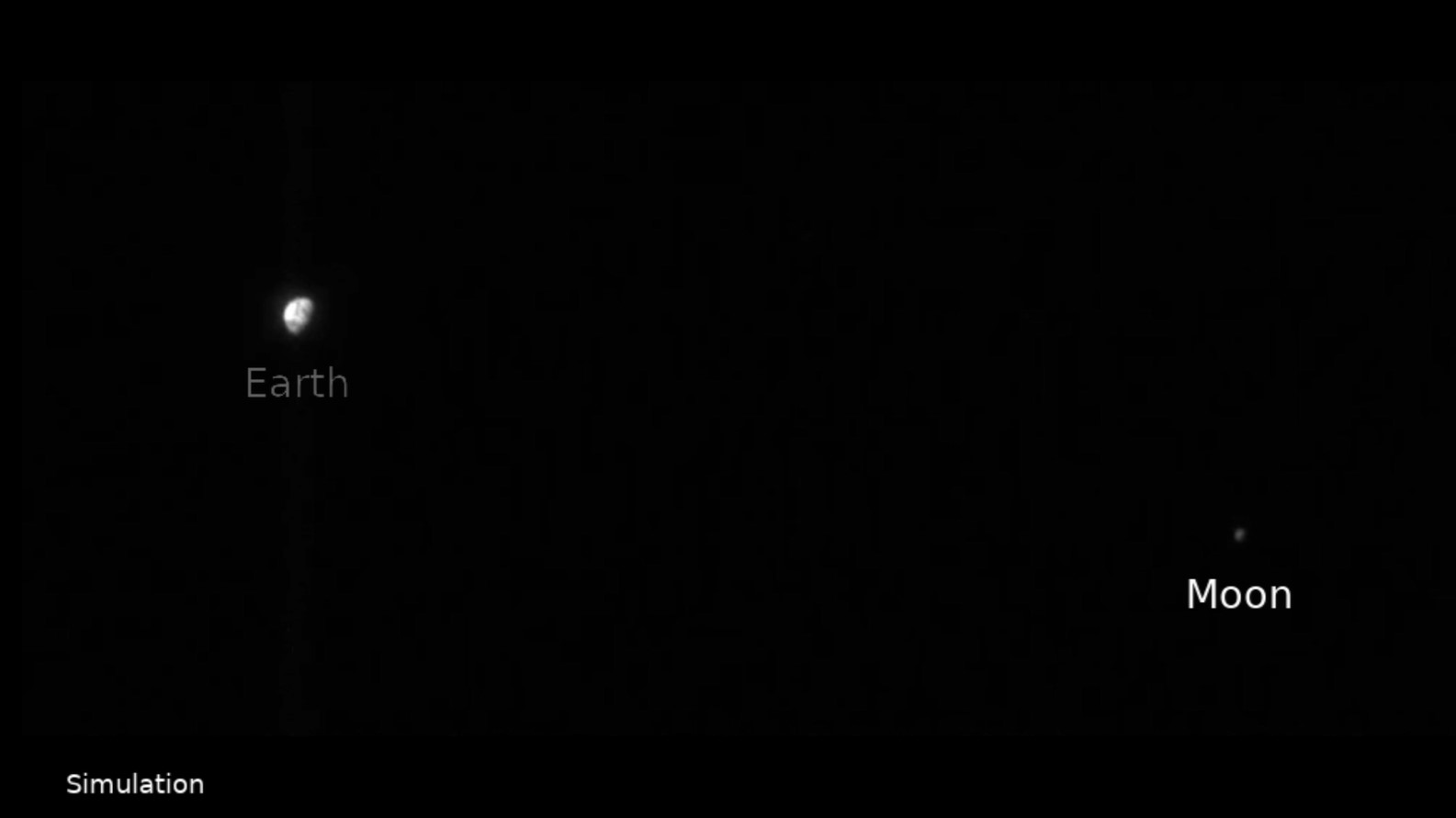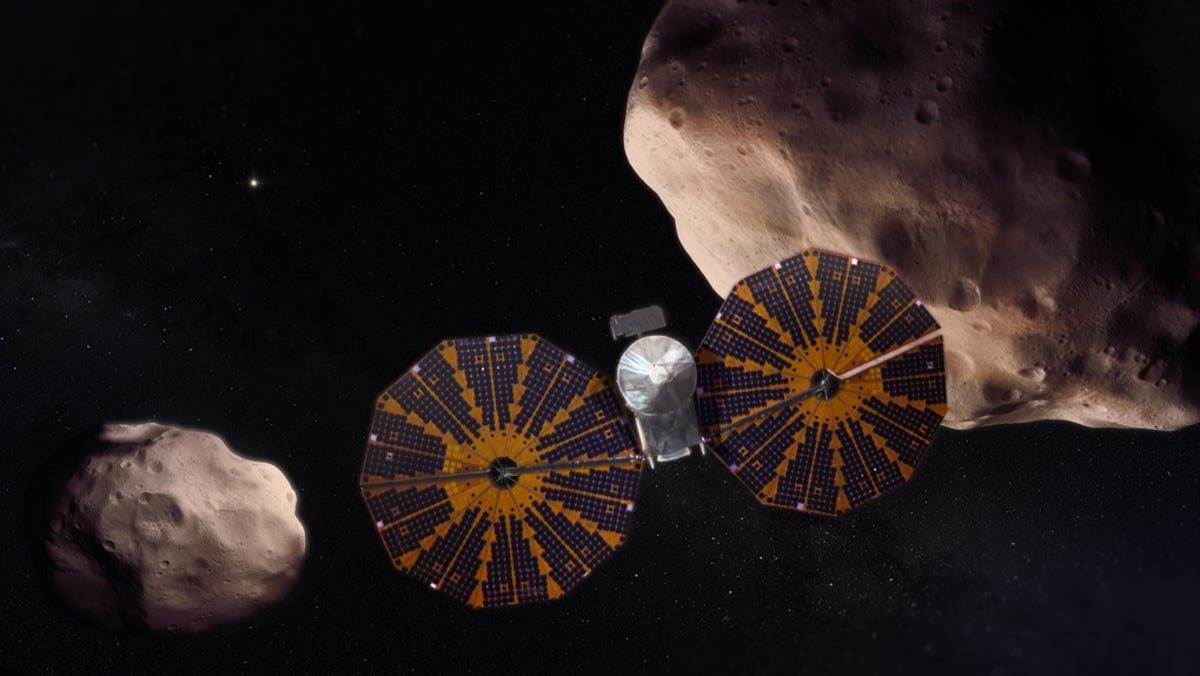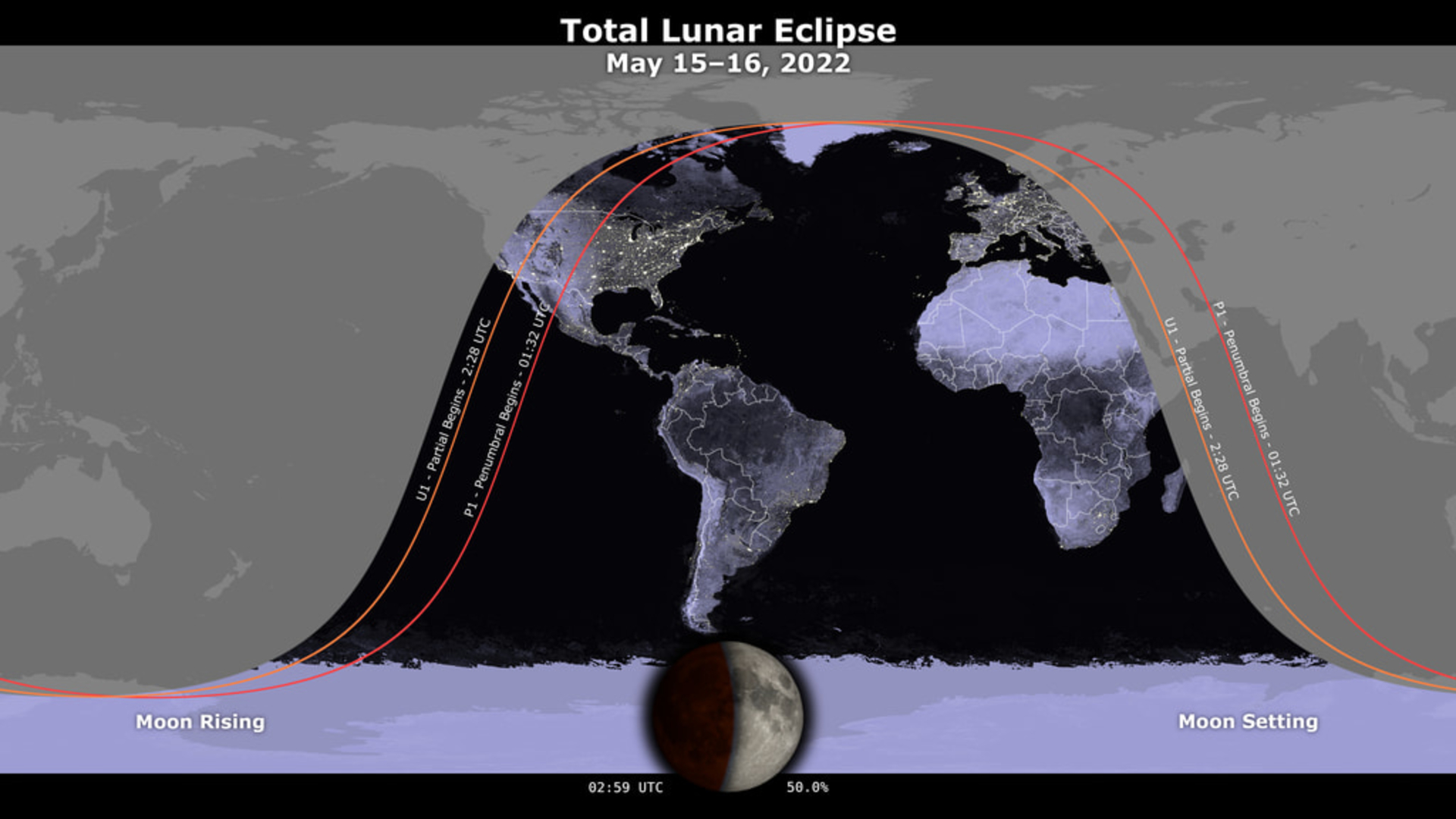NASA's Lucy asteroid probe will watch the Super Flower Blood Moon eclipse from deep space
Lucy will have a unique view of the lunar eclipse happening May 15 to 16.

Like a flashlight beam penetrating the dark, the moon's reflected sunlight will blink on and off during a lunar eclipse just visible by an asteroid-bound spacecraft.
A NASA spacecraft called Lucy plans to take a side view of the Super Flower Blood Mmoon lunar eclipse of May 15 on its way to visit clusters of asteroids that orbit the sun at about the same distance as Jupiter, called Trojans. The spacecraft, which launched in October 2021, is on a path back to Earth for a gravity assist to the outer solar system in October, but right now the spacecraft is still far away: roughly 70% of the distance between Earth and the sun. You can watch the Flower Blood Moon eclipse in webcasts, starting at 9:30 p.m. EDT (0130 GMT).
Regardless, at least some of the high-definition cameras on the spacecraft should (in theory) be able to see the moon passing into the Earth's shadow in the lunar eclipse on May 15 and 16, according to officials with the Southwest Research Institute in Colorado, where the mission's main science team is based.
"From this distance, Lucy will view the eclipse from an angle rarely seen," officials stated in a press release Thursday (May 12). "To Lucy, the gibbous Earth and moon will be easily visible. As the moon enters the shadow of the Earth it will blink out, [and] no longer be visible, until it moves again out of the Earth's shadow."
Related: Total lunar eclipse of May 2022: Flower Blood Moon guide

Looking for a telescope for the lunar eclipse? We recommend the Celestron Astro Fi 102 as the top pick in our best beginner's telescope guide.
To see the eclipse in action, Lucy will perform imaging using its L'LORRI (Lucy Long Range Reconnaissance Imager) high resolution panchromatic camera. That's a next-generation instrument based on a version that flew on the New Horizons spacecraft that whizzed by Pluto and is visiting other asteroids in the faraway Kuiper Belt.
The press release hinted that other imagers may be involved, but did not offer specifics. Lucy carries a few other such instruments. There's L'Ralph, a "two in one" instrument with a color camera (the Multispectral Visible Imaging Camera, MVIC) and infrared imaging spectrometer (Linear Etalon Imaging Spectral Array, LEISA).
Get the Space.com Newsletter
Breaking space news, the latest updates on rocket launches, skywatching events and more!

Additionally, during Lucy's main mission, the Terminal Tracking Cameras (T2CAM) provide wide-field imaging and L'TES, the infrared Thermal Emission Spectrometer, will measure the surface temperature of target asteroids.
"Viewing this eclipse will allow the Lucy team to do a 'test run' of the observation procedures, making sure that all the imagers and equipment are working as expected," SwRI stated. "It is also a fun opportunity as it is extremely rare to get real images of astronomical events like this, from such a unique vantage point."

On Earth, the Flower Moon's eclipse will be visible in total phase from portions of the Americas, Antarctica, Europe, Africa and the east Pacific. A penumbral eclipse (where the edge of Earth's shadow will fall over the moon) is visible in New Zealand, eastern Europe and the Middle East, although this type of eclipse is difficult to observe.
While timing depends on your location, TimeandDate.com says the partial eclipse phase of the moon eclipse begins May 15 at 10:28 p.m. EDT (0228 GMT on May 16). It will get to the red-hued Blood Moon peak May 16 at 12:11 a.m. EDT (0411 GMT). Then the event ends at 1:55 a.m. EDT (0555 GMT). Note the penumbral eclipse will begin about an hour earlier and end about an hour after the partial eclipse.
If you're hoping to photograph the moon, or want to prepare your gear for the total lunar eclipse, check out our best cameras for astrophotography and best lenses for astrophotography. Read our guides on how to photograph a lunar eclipse, as well as how to photograph the moon with a camera for some helpful tips to plan out you lunar photo session.
Editor's Note: If you snap an amazing lunar eclipse photo (or your own eclipse webcast) and would like to share it with Space.com's readers, send your photo(s), comments, and your name and location to spacephotos@space.com.
Follow Elizabeth Howell on Twitter @howellspace. Follow us on Twitter @Spacedotcom and on Facebook.
Join our Space Forums to keep talking space on the latest missions, night sky and more! And if you have a news tip, correction or comment, let us know at: community@space.com.

Elizabeth Howell (she/her), Ph.D., was a staff writer in the spaceflight channel between 2022 and 2024 specializing in Canadian space news. She was contributing writer for Space.com for 10 years from 2012 to 2024. Elizabeth's reporting includes multiple exclusives with the White House, leading world coverage about a lost-and-found space tomato on the International Space Station, witnessing five human spaceflight launches on two continents, flying parabolic, working inside a spacesuit, and participating in a simulated Mars mission. Her latest book, "Why Am I Taller?" (ECW Press, 2022) is co-written with astronaut Dave Williams.









